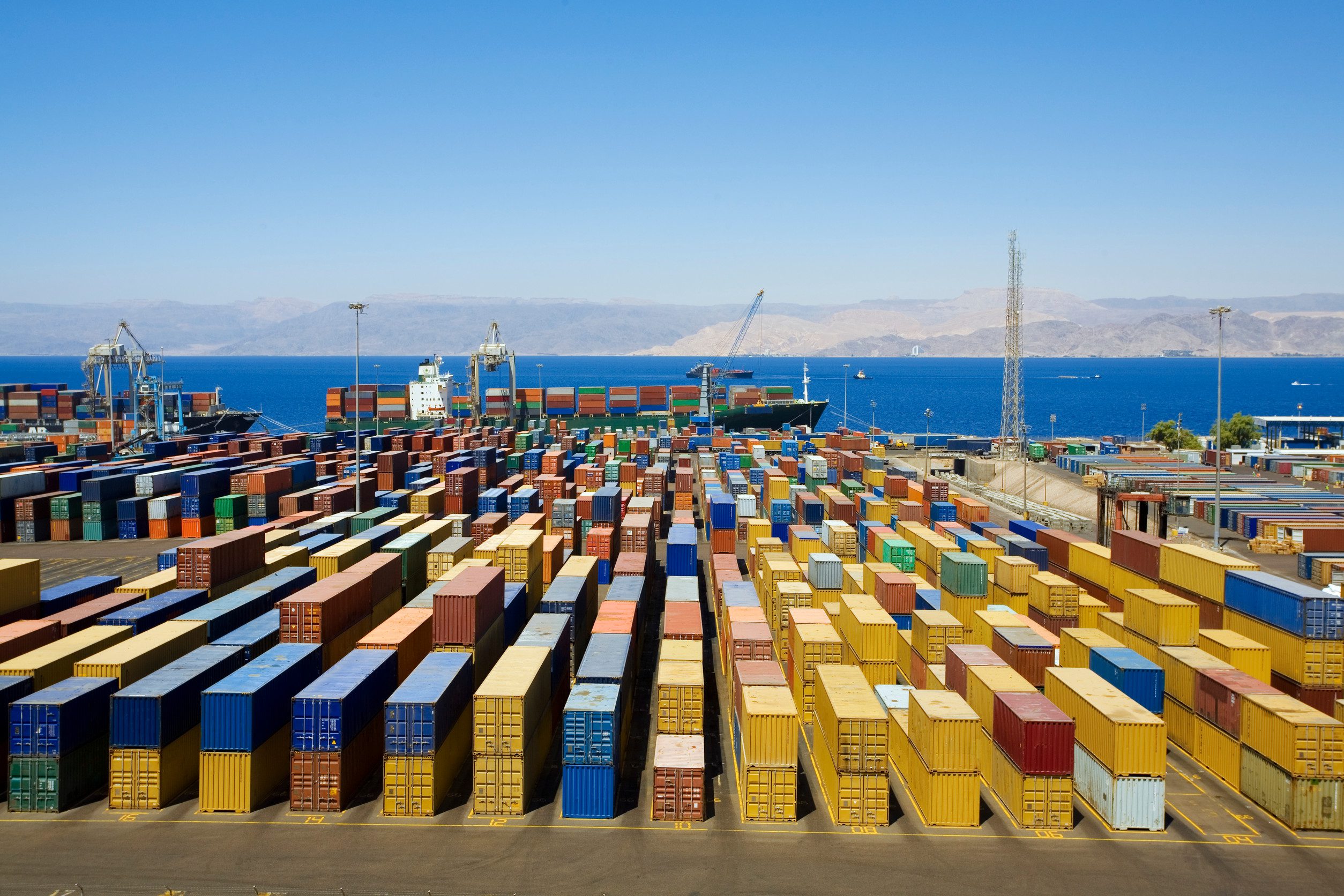10.02.2025
The role of seaports in 2024 and 2025
Seaports, as one of the most important links in global supply chains, are a reflection of the pace of the global economy. In 2024 and 2025, they played and continue to play an even greater role in global trade, the value of which is expected to reach record levels this year.

According to UNCTAD forecasts, in 2024 the turnover of international trade amounted to almost USD 33 trillion, and forecasts for 2025 indicate an increase to about USD 34 trillion.
Growing commodity volume
Maritime transport in 2024 transported more than 12.35 billion tons of goods, which is a significant part of global trade. Forecasts indicate that in 2025 this volume will increase by more than 2 percent. The dynamic development of ports, including terminal automation and the implementation of ICT, AI and VR systems, increases operational efficiency. The use of advanced technologies such as satellite systems and robotization improves the operation of ports, although at the same time the risk of cyberattacks and physical threats to critical infrastructure increases.
Security and new challenges
The increase in the value of trade brings with it increased threats to ports. Cyberattacks on terminal management systems are becoming more frequent, and growing shadow fleets and ships carrying strategic and dangerous cargo can be targeted by terrorist attacks. This problem is particularly relevant in the context of bulk carriers, container ships and tankers, which can be potential tools for port disruptions.
Asia leads global trade
Asia, particularly China, the Republic of Korea and Singapore, maintain dominance in global maritime trade. These countries are at the top of the Liner Shipping Connectivity Index (LSCI). Vietnam has seen a spectacular increase in logistics activity, achieving the highest increase in LSCI – by as much as 199 percent since 2006. Asian economies are increasing their share in supply chains, which translates into the intensification of the work of local ports.
In 2024, China’s foreign trade grew by 5.2 percent year-on-year, reaching 36.02 trillion yuan ($5.02 trillion). Electromechanical exports increased by 8.5 percent, which increased the demand for port services. Vietnam and India also recorded a significant increase in exports and imports, which contributed to increased port activity in these countries.
Global tensions and their impact on ports
Disruptions on major shipping routes such as the Red Sea and the Panama Canal hampered port operations in the first half of 2024. However, terminal operators have brought the situation under control and global supply chains have begun to stabilize. An increase in imports in developed countries by 3% in the third quarter of 2024 and an increase in exports by 2% have intensified the operation of transshipment terminals.
Trading in numbers
Increase in trade in machinery: 9.9% (April-July 2024).
- Increase in trade in electronics : 4.5% y/y
- Trade in chemicals: up 6% y/y
- Decline in trade in means of transport: -0.6% (April-July 2024).
- Decrease in trade of coal : -2.7% y/y.
Outlook for 2025
Forecasts point to continued growth in international trade, especially in the Asia-Pacific region. Vietnam plans to increase exports to $405 billion, an increase of 6 percent. India intends to achieve exports of USD 800 billion, and the Republic of Korea forecasts record trade surpluses. However, potential changes in U.S. trade policy could disrupt global supply chains and affect port operations.
Polish ports
In 2024, they handled 135 million tons of cargo, which, although a decrease compared to 2023, also emphasizes their importance as logistics and trade centres. Cargo handling of high value-added goods, such as containers, increased by more than 9%, reflecting the growing specialization of ports in handling modern supply chains.
The Port of Gdansk, the EU’s largest port on the Baltic Sea, has become a leader in the region, connecting Poland with global markets in Europe, Asia and the Americas. Its dynamic development and investments, such as the construction of the T3 terminal, increase the competitiveness of Polish companies on foreign markets.
Ports such as Gdynia and Szczecin-Świnoujście support the export and import of bulk goods, including grain, crude oil and chemicals, which are the backbone of the country’s industry. The ports’ record-breaking financial results in 2024, with a total net profit, which amounted to PLN 551.7 million.
Seaports remain a major component of the global economy, but their operations in 2025 are fraught with both opportunities related to technological development and challenges resulting from security threats and political tension.
Sources:
GospodarkaMorska.pl, Gospodarka i porty morskie w 2024 i 2025 r. Rośnie rola portów morskich APEC oraz ASEAN
The Ministry of Infrastructure, Polskie porty morskie biją rekordy. Ambitne plany inwestycyjne na przyszłość;
Spis treściTable of contents
- Everything
- News (260)
- Events (160)
- Get Support (82)
-

GRUPA GRAND SPÓŁKA Z OGRANICZONĄ ODPOWIEDZIALNOŚCIĄ
ConstructionRenovation and construction materialsIndustrial machinery and mechanical appliances and parts thereofShow allShow more Show lessGrupa Grand specializes in designing and manufacturing innovative engineering solutions. The company offers stainless steel swimming pools, vertical parking systems, and services as a general contractor. Its main export products include stainless steel pools and automated parking systems, which are highly regarded in international markets for their high quality, durability, and modern design.

DFM EUROPE SPÓŁKA Z OGRANICZONĄ ODPOWIEDZIALNOŚCIĄ
Show more Show lessDFM is a modern brand on the market of passive fire protection systems like doors, gates and windows. We are a team of professionals manifesting long experience in design and production, technical support and supply of fire resistant doors. DFM DS steel doors have been widely fire tested for miscellaneous fire resistance ratings. Our aim is to secure our Customers’ business with our skills, engagement and expertise as well as products strictly obeying the up – to date fire safety requirements.

ORZESZEK SPÓŁKA Z OGRANICZONĄ ODPOWIEDZIALNOŚCIĄ
Fruit, vegetables, mushrooms and products thereofCereals and products of the milling industryOther food productsShow allShow more Show lessOrzeszek company for more than 20 years we have been selecting, confectioning and selling high-quality foods: nuts, dried fruits, grains, cereals, honey, spices and products from other food categories. As an experienced partner, we assist in the entire process, from product delivery to packaging creation and distribution. We have a network of proven subcontractors and our own logistics facilities. We have been certified by IFS Food, which enables food safety and quality systems.
-
 Event
EventAGRO SHOW 2025
International Exhibition – Agro Show 2025 will be held between the 19th-21st September 2025, in Bedn…
 Event
EventKIELCE IFRE-EXPO 2025
The 5th International Trade Fair of Fire Brigade and Rescue Services Equipment will be held between …
-
 Institution
InstitutionPolish Investment and Trade Agency (PAIH)
The Polish Investment and Trade Agency (PAIH) is the partner of first-resort for entrepreneurs when …
 Institution
InstitutionPolish Agency for Enterprise Development (PARP)
Polish Agency for Enterprise Development (PARP) mission is an implementation of economical developme…
The Export Promotion Portal uses cookies to make it easier for users to use the website and for statistical purposes. If you do not block these files, you agree to their use and saving in the memory of your computer or other device. Remember that you can change your browser settings to block the storage of cookies. More information can be found in Privacy Policy and Terms and conditions.







